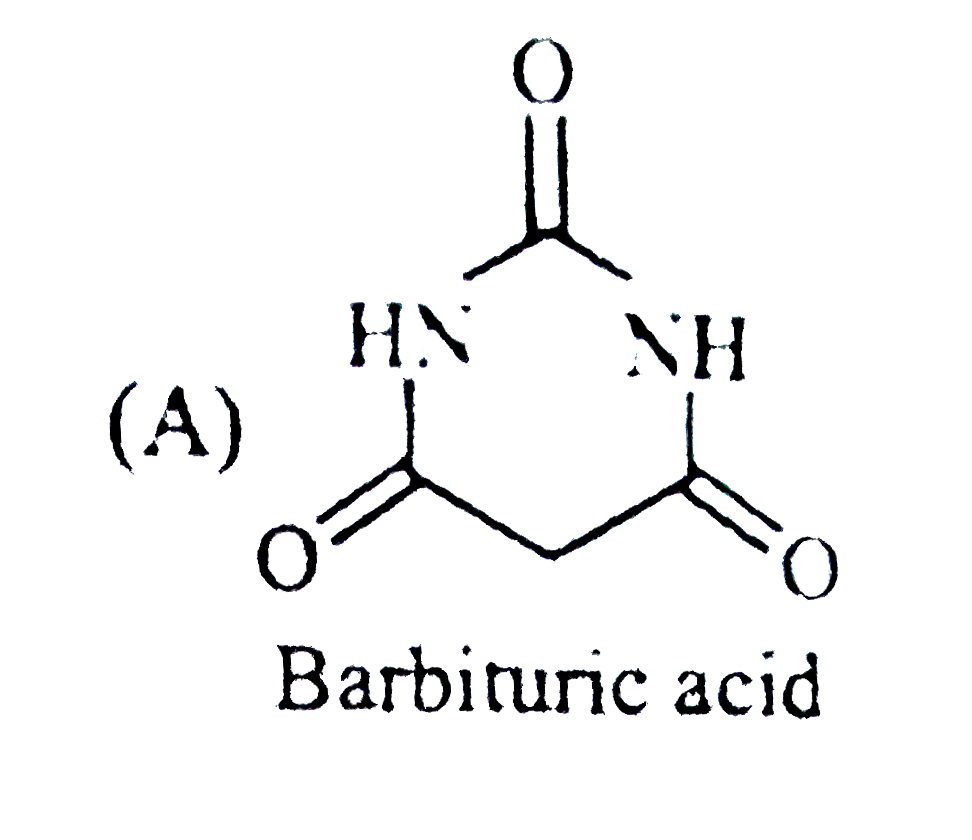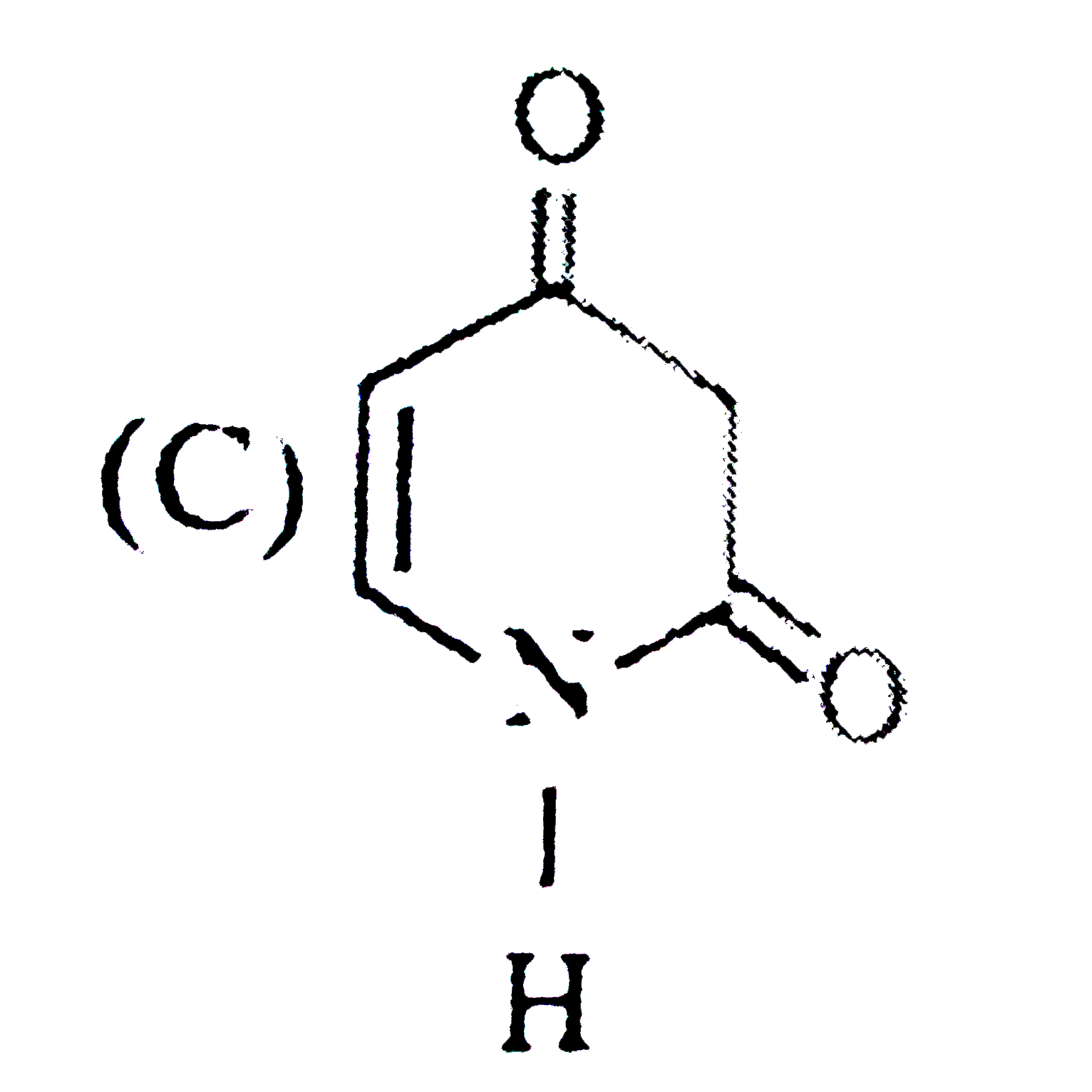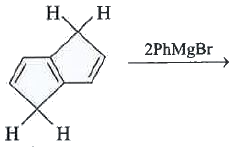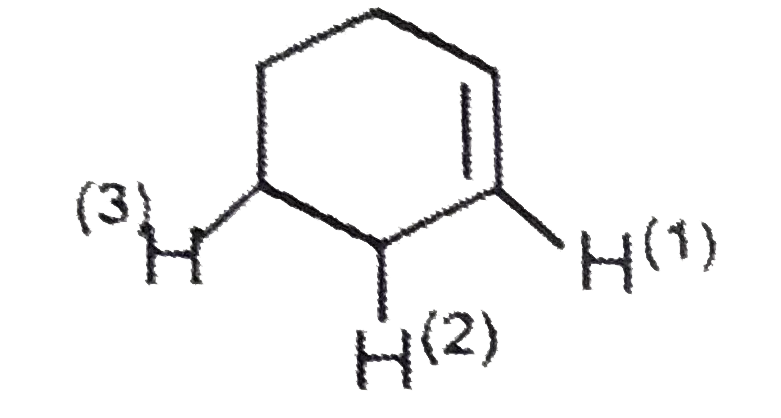Select the number of compounds in which deprotonation gives aromatic anion:




The correct Answer is:A, B, C, D
To solve the question of selecting the number of compounds that give aromatic anions upon deprotonation, we will analyze each of the given options step by step.
Step 1: Analyze Option A - Barbituric Acid
1. Structure: Barbituric acid has two NH groups and multiple carbonyl (C=O) groups.
2. Deprotonation: When we remove protons from the NH groups, we can generate negative charges on the nitrogen atoms.
3. Conjugation: The negative charge can delocalize through the structure, allowing for resonance stabilization.
4. Aromaticity: After deprotonation and resonance, the resulting structure will have a conjugated system with 6 π electrons, satisfying Huckel's rule (4n + 2, where n = 1).
5. Conclusion: Barbituric acid can form an aromatic anion upon deprotonation.
Step 2: Analyze Option B - Ascorbic Acid
1. Structure: Ascorbic acid (Vitamin C) contains multiple hydroxyl (OH) groups and a lactone structure.
2. Deprotonation: Removing protons from the hydroxyl groups does not lead to a structure that allows for significant conjugation.
3. Conjugation: The resulting anion lacks a continuous π system.
4. Aromaticity: The structure does not satisfy the criteria for aromaticity and does not have 6 π electrons.
5. Conclusion: Ascorbic acid does not form an aromatic anion upon deprotonation.
Step 3: Analyze Option C
1. Structure: This compound has a nitrogen atom and carbonyl groups.
2. Deprotonation: Upon removing a proton, a negative charge can be generated.
3. Conjugation: The negative charge can delocalize through the nitrogen and carbonyls, creating resonance.
4. Aromaticity: The resulting structure has a conjugated system with 6 π electrons, fulfilling Huckel's rule.
5. Conclusion: This compound can form an aromatic anion upon deprotonation.
Step 4: Analyze Option D
1. Structure: This compound contains a benzene ring and carbonyl groups.
2. Deprotonation: Removing a proton from the hydroxyl group leads to a negative charge.
3. Conjugation: The negative charge can delocalize into the benzene ring, creating resonance.
4. Aromaticity: The resulting phenoxide ion has 6 π electrons, confirming aromaticity.
5. Conclusion: This compound can also form an aromatic anion upon deprotonation.
Final Conclusion
After analyzing all four options, we find that:
- Option A: Aromatic anion (Correct)
- Option B: Not aromatic (Incorrect)
- Option C: Aromatic anion (Correct)
- Option D: Aromatic anion (Correct)
Thus, the total number of compounds that give aromatic anions upon deprotonation is 3 (Options A, C, and D).
1. Structure: Barbituric acid has two NH groups and multiple carbonyl (C=O) groups.
2. Deprotonation: When we remove protons from the NH groups, we can generate negative charges on the nitrogen atoms.
3. Conjugation: The negative charge can delocalize through the structure, allowing for resonance stabilization.
4. Aromaticity: After deprotonation and resonance, the resulting structure will have a conjugated system with 6 π electrons, satisfying Huckel's rule (4n + 2, where n = 1).
5. Conclusion: Barbituric acid can form an aromatic anion upon deprotonation.
1. Structure: Ascorbic acid (Vitamin C) contains multiple hydroxyl (OH) groups and a lactone structure.
2. Deprotonation: Removing protons from the hydroxyl groups does not lead to a structure that allows for significant conjugation.
3. Conjugation: The resulting anion lacks a continuous π system.
4. Aromaticity: The structure does not satisfy the criteria for aromaticity and does not have 6 π electrons.
5. Conclusion: Ascorbic acid does not form an aromatic anion upon deprotonation.
1. Structure: This compound has a nitrogen atom and carbonyl groups.
2. Deprotonation: Upon removing a proton, a negative charge can be generated.
3. Conjugation: The negative charge can delocalize through the nitrogen and carbonyls, creating resonance.
4. Aromaticity: The resulting structure has a conjugated system with 6 π electrons, fulfilling Huckel's rule.
5. Conclusion: This compound can form an aromatic anion upon deprotonation.
1. Structure: This compound contains a benzene ring and carbonyl groups.
2. Deprotonation: Removing a proton from the hydroxyl group leads to a negative charge.
3. Conjugation: The negative charge can delocalize into the benzene ring, creating resonance.
4. Aromaticity: The resulting phenoxide ion has 6 π electrons, confirming aromaticity.
5. Conclusion: This compound can also form an aromatic anion upon deprotonation.
After analyzing all four options, we find that:
- Option A: Aromatic anion (Correct)
- Option B: Not aromatic (Incorrect)
- Option C: Aromatic anion (Correct)
- Option D: Aromatic anion (Correct)
Topper's Solved these Questions
- ACIDIC STRENGTH & BASIC STRENGTHBOOK - ALLENCHAPTER - ACIDIC STRENGTH & BASIC STRENGTHEXERCISE - Exercise IV
30 Videos
- ACIDIC STRENGTH & BASIC STRENGTHBOOK - ALLENCHAPTER - ACIDIC STRENGTH & BASIC STRENGTHEXERCISE - Exercise V
16 Videos
- ACIDIC STRENGTH & BASIC STRENGTHBOOK - ALLENCHAPTER - ACIDIC STRENGTH & BASIC STRENGTHEXERCISE - Exercise II
15 Videos
- CONCENTRATION TERMSBOOK - ALLENCHAPTER - CONCENTRATION TERMSEXERCISE - Exercise Jee-Advance
3 Videos
- AIIMS 2019BOOK - ALLENCHAPTER - AIIMS 2019EXERCISE - CHEMISTRY
40 Videos
Similar Questions
Knowledge Check
Which of the following reactions give aromatic ion ?
A B
B C
C D
D
Which one of the following compounds undergoes bromination of its aromatic ring (electrophilic aromatic substitution) at the fastest rate ?
A B
B C
C D
D
Which of the following compound undergoes bromination on aromatic ring at fastest rate.
A B
B C
C D
D


